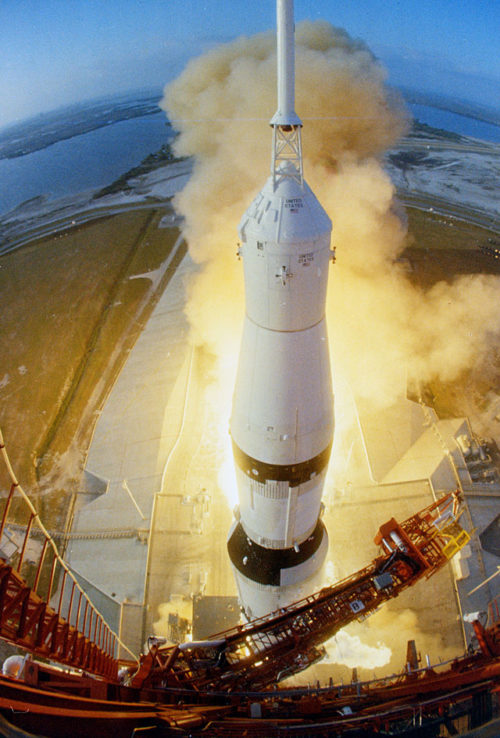
Throughout its stellar 13-flight career, between November 1967 and May 1973, the mighty Saturn V—which still retains a place as the largest and most powerful rocket ever to reach operational service—never once failed to complete its assigned mission. It boosted two unmanned and one manned Apollo spacecraft into low-Earth orbit, sent nine teams of explorers to the Moon and lofted America’s first space station, Skylab. None of those flights were entirely without incident, of course, with Skylab’s tortured ride to orbit leading to an all-out repair effort by its first crew and Apollo 13 suffering an engine-out situation during ascent. Yet one mission about which less is known was the unmanned Apollo 6 flight, launched 50 years ago this week, on 4 April 1968, whose difficult journey into space gave NASA pause to consider if the goal of landing a man on the Moon before the decade’s end was really achievable. Significantly, on the very same day in Memphis, Tenn., the acclaimed civil rights leader Martin Luther King was assassinated, casting a truly dark shadow across U.S. history.
https://youtu.be/kREHEUWCXbo
Video Credit: NASA
America’s drive to plant human bootprints on the dusty lunar surface had been fraught with risk and an overconfidence inspired by the success of Project Gemini had been cruelly arrested by the deaths of astronauts Virgil “Gus” Grissom, Ed White and Roger Chaffee in their Apollo 1 spacecraft, during a “plugs-out” test on Pad 34 at Cape Kennedy on 27 January 1967. Following a lengthy period of introspection and rebuilding, the maiden voyage of the Saturn V booster took place the following November, marking the first launch from Pad 39A and carrying the unmanned Apollo 4 into high orbit. Two months later, in January 1968, a smaller Saturn IB successfully lofted Apollo 5 on the inaugural test-flight of the Grumman-built Lunar Module (LM). But before NASA could commit a human crew to the Saturn V, one more unmanned test was necessary. That was the task of Apollo 6.
The success of the Saturn V’s first flight had fired up hopes about the rocket’s reliability, but on its second mission its temperamental side would come to the fore. Processing of the components had been ongoing for months. Its S-IC first stage had arrived at Cape Kennedy in March 1967 and was mated to its S-II second stage inside the cavernous Vehicle Assembly Building (VAB) in May. Nine months later, topped-off by the S-IVB third stage and the all-white Apollo 6 Command and Service Module (CSM), the entire 363-foot-tall (110-meter) stack was rolled into wind-driven rain towards Pad 39A. Communications difficulties conspired to delay the rollout, but by 6 p.m. EST the behemoth was “hard-down” on the pad.
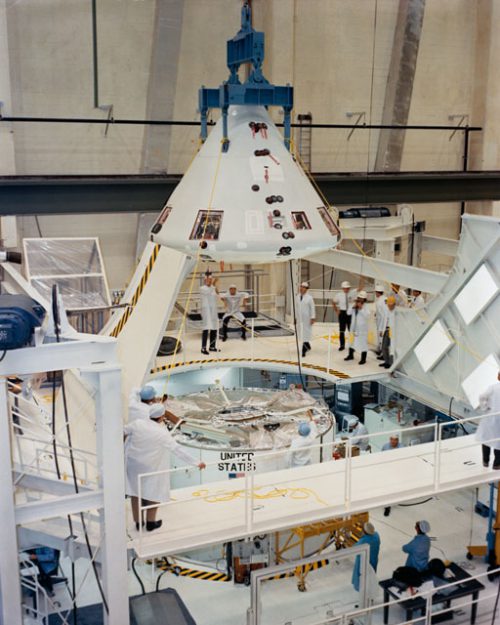
Apollo 6 would put the spacecraft through its paces, before the first human crew—Apollo 7 Commander Wally Schirra, Senior Pilot Donn Eisele and Pilot Walt Cunningham—made their flight, later in 1968. Yet the mission fell foul of many delays. Originally targeted to launch in early 1968, service module problems forced an inspection and strengthening of the Apollo 6 hardware, whilst water seepage in the Saturn V’s S-II was detected after the 6 February rollout to the pad and some parts required replacement. Eventually, at 7 a.m. EDT on 4 April, the mission got underway, with the ignition of the five F-1 first-stage engines. As with its previous launch, the initial moments of the Saturn V’s climb to space seemed charmed.
“Pitch and Roll Program’s started,” came the commentary in the seconds after clearing the tower. “Vehicle is going now to an azimuth heading of 72 degrees. All five F-1 engines firing; they’re lookin’ good, they’re giving a Green Light at this time from Range Safety.” A little over a minute into the flight, the mighty Saturn burst through Maximum Aerodynamic Pressure.
Then things started to go wrong.
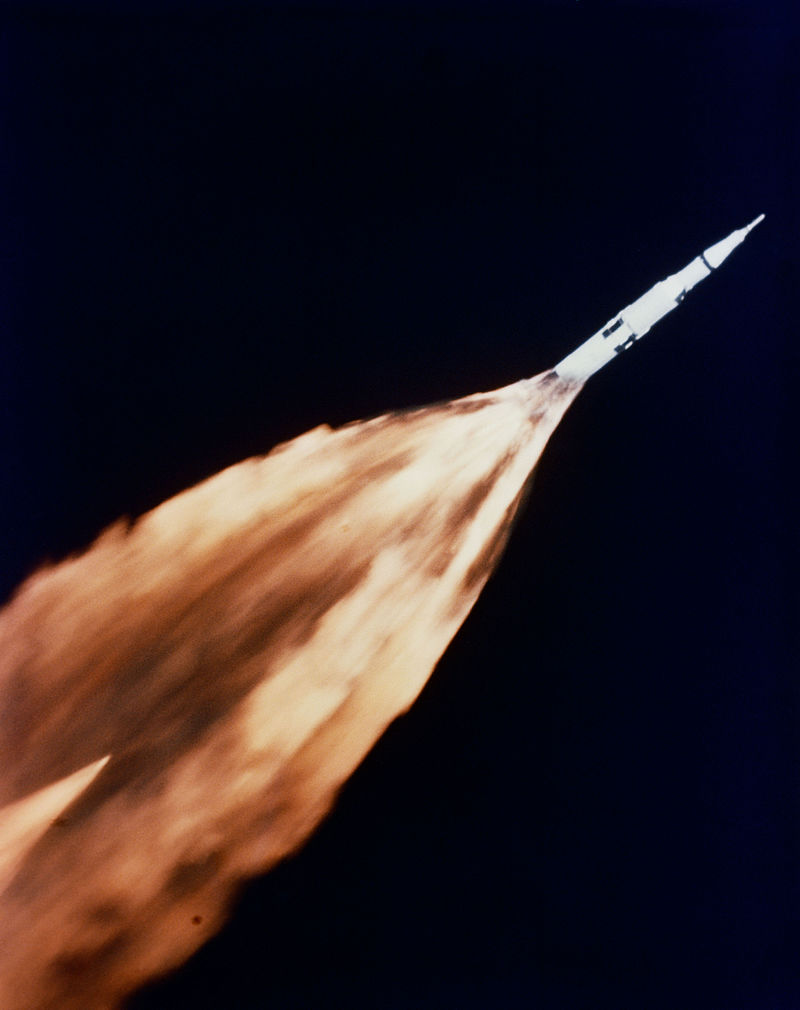
For the first two minutes, the five F-1 engines on the first stage burned normally, but then experienced peculiar thrust fluctuations, which caused the entire rocket to “bounce” violently, like a pogo stick. The oscillations lasted about 30 seconds. Sensors inside the Apollo 6 command module measured low-frequency modulations, which exceeded design criteria, but otherwise the first stage completed its task and separated on time. Next came the turn of the S-II. Four minutes into a six-minute “burn”, two of the five J-2 engines shut down, requiring the others to fire for an additional 59 seconds to compensate for the abrupt power loss. Fortuitously, the failed J-2s were on opposite sides of the stage, so the loss of one balanced the other and the Saturn V did not tumble or explode. Nevertheless, the second stage troubles left thre vehicle at a higher-than-planned altitude before its fuel was expended.
The result was that the S-IVB also had to burn for longer to make up the shortfall in propulsive thrust. According to astronaut Deke Slayton, who was watching the launch, it was confusing to the third stage’s computer, “which realized it was higher than it should be…and slower. So while it added 29 seconds to the burn, it actually pointed itself down toward the center of the Earth.” After a difficult ascent, during which the S-IVB pitched itself backupwards and entered spaceflying backwards, Apollo 6 achieved an elliptical orbit, with a perigee of 110 miles (178 km) and an apogee of 228 miles (367 km), instead of 100 miles (160 km) circular.
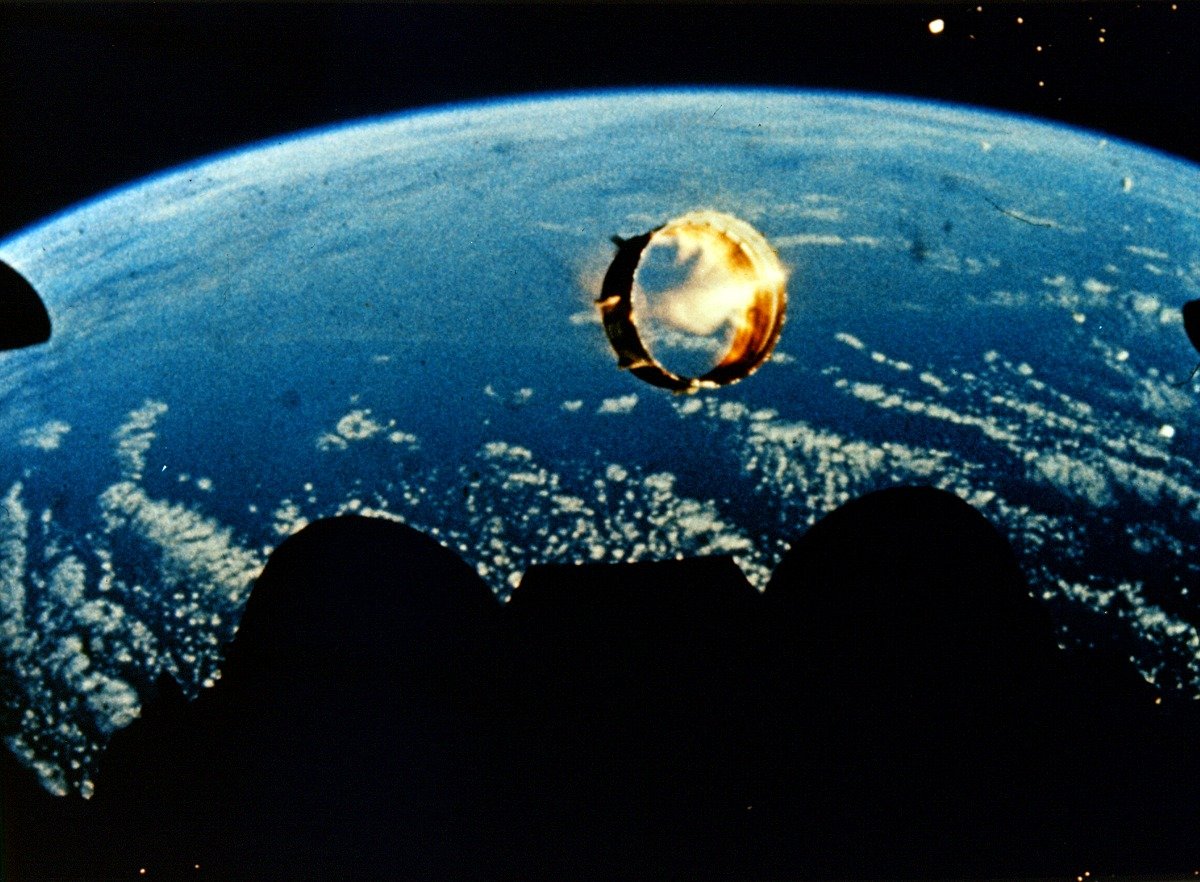
Original plans called for the S-IVB to conduct a 310-second burn to insert Apollo 6 into a simulated translunar coasting ellipse, with an apogee of 320,000 miles (516,000 km). The spacecraft would then be maneuvered 180 degrees and separated from the rocket’s third stage. Moving at 23,878 mph (38,430 km/h), a burn by the Service Propulsion System (SPS) engine on Apollo 6’s service module would have slowed the spacecraft and lowered its apogee to 13,800 miles (22,225 km). A second SPS burn would then have increased the spacecraft’s re-entry velocity to condition which would be expected on future lunar-return trajectories, some 24,856 mph (40,000 km/h). The Apollo 6 command module would plunge back to Earth and splash down in the Pacific Ocean, north of Hawaii, a little under ten hours after launch.
Sadly, this ambitious plan did not come to pass. Adding insult to injury, the S-IVB failed to restart for its 310-second burn. “If this had been a manned flight,” wrote Slayton in his memoir, Deke, “the escape tower on the Apollo would have been commanded to fire, pulling the spacecraft away from the Saturn for a parachute landing in the Atlantic.”
An “alternate” mission for Apollo 6 was now unavoidable and the command and service modules were duly separated from the booster. The spacecraft’s Service Propulsion System (SPS) engine was burned for seven minutes—longer than it would ever fire on a nominal lunar-bound mission—to simulate a Trans-Lunar Injection (TLI) maneuver, pushing the apogee to 13,800 miles (22,200 km). Although this gave Apollo 6 enough altitude to mimic a lunar-type return, it did not impact the required velocity and the spacecraft splashed down in the Pacific Ocean, missing its target point by 50 miles (80 km). Splashdown occurred some nine hours and 57 minutes after launch. Against all the odds, the spacecraft had performed well, and within expectations, whilst for the Saturn V there was discussion throughout the summer of 1968 of staging a third unmanned mission, before committing a human crew.
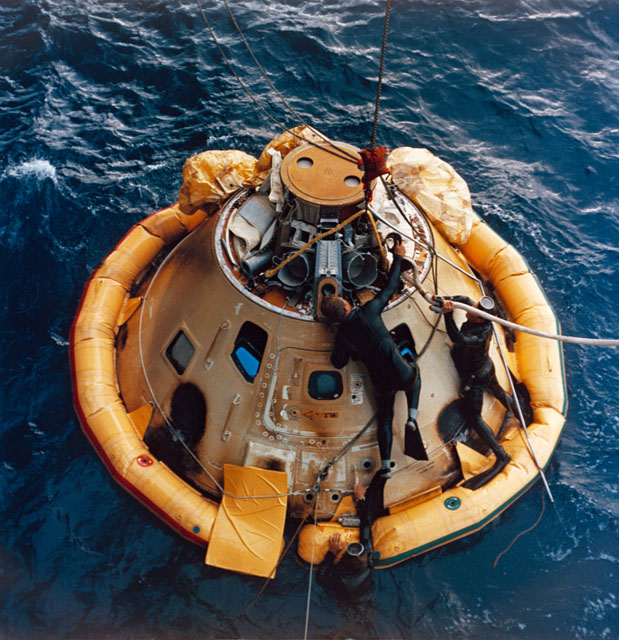
The cause of the pogo was traced to a partial vacuum in the fuel and oxidizer suction lines by the rocket’s engines. This condition produced a hydraulic resonance, as the engine “skipped” when bubbles created by the partial vacuum reached the firing chamber. It later became apparent via engineering analyses that two engines had been inadvertently tuned to the same frequency, which likely worsened the problem. Future missions would have their engines tuned to different frequencies to prevent any two or more of them from tugging the Saturn off-balance and adversely affecting its trajectory.
Following a significant period of retesting of the F-1 engines from May 1968 onwards, a series of “cures” were trialed, some of which proved worse than the disease. Yet to this day, it remains remarkable that the troubles afflicting the most powerful rocket ever brought to operational status—and a key hinge in getting Americans to the Moon—were ironed-out within a matter of months, allowing the Saturn V to triumphantly deliver Apollo 8 astronauts Frank Borman, Jim Lovell and Bill Anders to lunar orbit in December 1968.
FOLLOW AmericaSpace on Facebook!
Missions » Apollo »



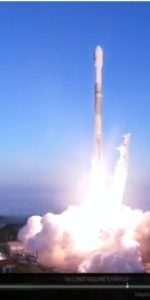
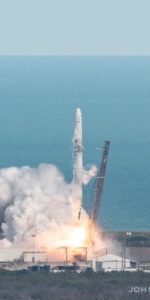
Rather than “almost failed”, it did, in my view, absolutely failed. The launch vehicle failed to place its payload into the originally planned orbit when the S-IVB stage failed to restart.
In my view, AS-502 did not “almost fail”. It did fail. This Saturn V failed to put its payload anywhere near its planned orbit after the S-IVB stage failed to restart.
“A nuclear thermal powered upper stage could have enabled a more mission capable Saturn V. A nuclear thermal powered upper stage for the SLS could significantly boost its Lunar, Cislunar, and beyond Cislunar payload capabilities”.
Yes, but NASA was on the clock. There simply wasn’t time to integrate a nuclear engine into the Saturn V and still beat Kennedy’s deadline – or the Russians.
Apollo was not about building the best possible lunar architecture. It was about building the best possible lunar architecture that could get NASA to the Moon in under nine years.
It’s certainly worth NASA investing money into researching now, however.
James: “hustle” is a very apt word that needs to be used in the American space program, lest we relinquish leadership to China and other nations.
James-
Whether nuclear, electric, ion or some other propulsion system, you are quite correct in suggesting that to explore the planets, quicker, more efficient and faster means must be used if humans want to explore without undue time and related mission challenges. “Time is of the essence.”
When I first the last sentence of your comment, I thought you meant it was critical to get going as fast as possible with time critical missions. I would disagree. Then I realized that you meant that trip times need to be reduced to the extent reasonably possible, with which I do agree. We seem to also agree that one should be careful not to try to shoehorn all the technological eggs into one operational basket.
Or …this is what’s coming
http://www.foxnews.com/opinion/2018/04/22/newt-gingrich-glimpse-america-s-future-in-space-in-2024.html
If the Russians successfully test a nuclear engine to get cosmonauts to Mars in six weeks, that would potentially represent a “leap frog” in space achievements.